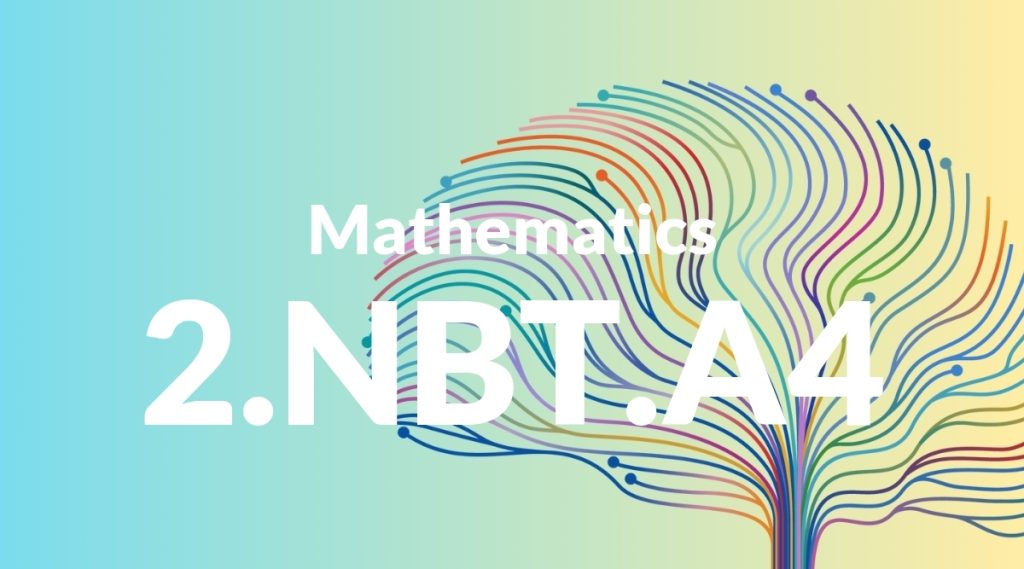Standard: 2.NBT.A4 – Compare two three-digit numbers based on meanings of the hundreds, tens, and ones digits, using >, =, and < symbols to record the results of comparisons.
Grade level: Grade 2
Subject: Mathematics
Domain: Number & Operations in Base Ten
Teacher Overview
This standard focuses on helping students compare three-digit numbers by understanding the place value of hundreds, tens, and ones. This skill is crucial as it lays the foundation for more advanced arithmetic and number sense. Students should have a solid grasp of place value for two-digit numbers and be familiar with the symbols >, =, and <.
After mastering this standard, students will be able to add and subtract three-digit numbers and solve more complex problems involving multi-digit numbers.
Common Misconception 1
Students may incorrectly believe that a number with more digits is always larger, not recognizing the importance of place value.
Intervention 1
Use visual aids like place value charts to demonstrate how the position of a digit affects its value.
Common Misconception 2
Students might confuse the symbols > and <, leading to incorrect comparisons.
Intervention 2
Provide ample practice with number lines and comparative exercises to reinforce correct symbol usage.
Prerequisite Knowledge
Students should understand place value up to 100, be able to identify and compare two-digit numbers, and have a basic understanding of the >, =, and < symbols.
Subsequent Knowledge
Students will develop skills in adding and subtracting three-digit numbers, understanding the concept of rounding, and solving more complex word problems involving multi-digit numbers.
Instructional Activities
- Use place value charts to compare numbers
- Interactive games that involve comparing three-digit numbers
- Group activities where students compare sets of numbers
- Worksheets focused on using >, =, and < symbols




